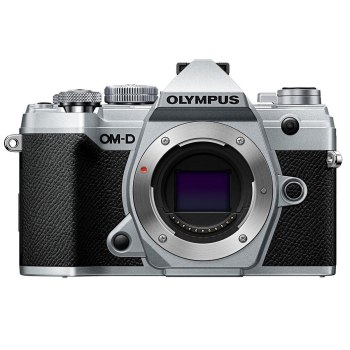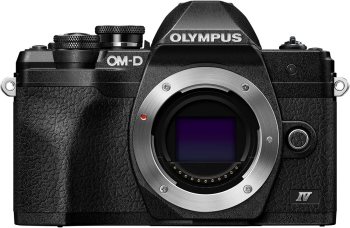- Portable and lightweight
- Excellent stabilization
- Weather-sealed
- User-friendly
- Compact and lightweight
- Affordable
- Small battery life
- No headphone jack
- Limited advanced features
- Slower AF in low light
Olympus OM-D E-M5 Mark III vs Olympus OM-D E-M10 Mark IV
When it comes to Olympus cameras, two popular models that often get compared are the Olympus OM-D E-M5 Mark III and the Olympus OM-D E-M10 Mark IV. Both cameras belong to the esteemed OM-D series, known for their exceptional image quality, durability, and innovative features. In this in-depth comparison, we'll delve into the key similarities and differences between these two models to help you decide which one is best suited for your photography needs.
Design and Build
Both the E-M5 Mark III and E-M10 Mark IV boast a compact and lightweight design, making them ideal for travel and everyday shooting. However, the E-M5 Mark III has a slightly more rugged build, with a magnesium alloy body that provides enhanced durability and weather-sealing. The E-M10 Mark IV, on the other hand, has a polycarbonate body that is still well-built but not quite as robust.
Sensor and Image Quality
Both cameras feature a 20.4-megapixel Live MOS sensor, which delivers excellent image quality with impressive detail and color accuracy. However, the E-M5 Mark III has a slightly more advanced sensor with improved noise reduction and dynamic range. This results in better low-light performance and more nuanced tonal gradations.
Autofocus
The E-M5 Mark III has a more advanced autofocus system, with 121 phase-detection points and improved subject tracking. This allows for faster and more accurate focusing, particularly when shooting moving subjects. The E-M10 Mark IV, while still featuring a capable autofocus system, has 121 contrast-detection points but lacks the phase-detection technology of its sibling.
Video Capabilities
Both cameras are capable of recording high-quality video, with 4K resolution at 30p and 1080p at 120fps. However, the E-M5 Mark III has more advanced video features, including OM-Log mode for enhanced color grading and a more comprehensive set of audio controls.
Stabilization
Both cameras feature Olympus' renowned 5-axis image stabilization system, which provides excellent compensation for camera shake and blur. However, the E-M5 Mark III has a slightly more advanced system with improved performance in low-light conditions.
Price and Value
The Olympus OM-D E-M10 Mark IV is generally priced lower than the E-M5 Mark III, making it an attractive option for entry-level photographers or those on a budget. However, the E-M5 Mark III offers more advanced features and better build quality, which may justify the additional cost for professionals or serious enthusiasts.
Conclusion
In conclusion, both the Olympus OM-D E-M5 Mark III and E-M10 Mark IV are excellent choices within the Olympus cameras lineup. While the E-M10 Mark IV offers great value and impressive performance for its price, the E-M5 Mark III is a more advanced camera with improved features and build quality. Ultimately, the decision between these two models will depend on your specific needs and priorities as a photographer. If you're looking for a more rugged and feature-rich camera with exceptional image quality, the E-M5 Mark III may be the better choice. However, if you're on a budget or just starting out, the E-M10 Mark IV is an excellent option that still delivers outstanding results.































